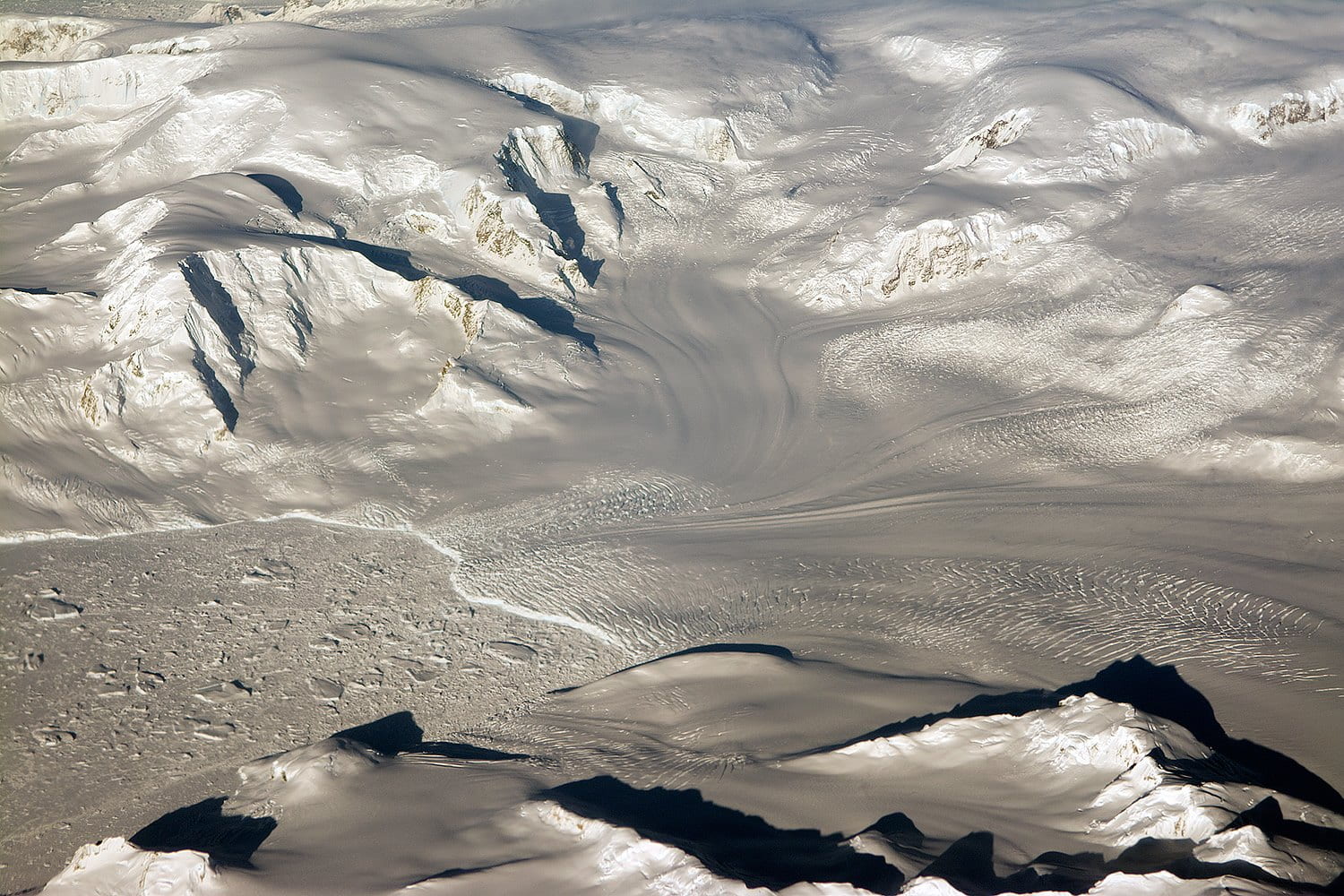UCI researchers map oceanic troughs below ice sheets in West Antarctica
Channels give warm ocean water access to their undersides, speeding glacier retreat

Irvine, Calif., Jan. 18, 2017 – University of California, Irvine glaciologists have uncovered large oceanic valleys beneath some of the massive glaciers flowing into the Amundsen Sea in West Antarctica. Carved by earlier advances of ice during colder periods, the subsurface troughs enable warm, salty water to reach the undersides of glaciers, fueling their increasingly rapid retreat.
The discovery is the result of an analysis of gravity data from airborne NASA Operation IceBridge missions from 2009 to 2014 combined with ice motion measurements made by UCI researchers, UCI’s own mass conservation algorithm, and existing bed topography and ice thickness information. Study findings appear in the American Geophysical Union journal Geophysical Research Letters.
“Based on our research, we now have a much clearer picture of what is hiding under these large glaciers located in a particularly vulnerable sector of West Antarctica,” said lead author Romain Millan, a graduate student in Earth system science.
The researchers paid particular attention to sub-ice-shelf cavities in front of the Pine Island, Thwaites, Smith and Kohler glaciers in an area known as the Amundsen Sea Embayment. By obtaining a more high-resolution map of the ocean floor below the glaciers, they were able to detect an unmistakable cavity beneath the Pine Island Glacier and a slightly shallower depression beneath Thwaites.
Millan said the study’s most important findings were the gigantic submarine valleys under the Crosson and Dotson ice shelves. The channels start 1,200 meters below the masses of ice and slope up to points 500 meters beneath Crosson and 750 meters beneath Dotson.
“These oceanic features are several hundreds to a thousand meters deeper than what we thought before,” he said. “It gives new insight into the future fate of these glaciers and the potential influence of warm ocean water that can melt away ice from below.”
Should the glaciers in the Amundsen Sea Embayment region of Antarctica completely collapse, researchers said, the global sea level could rise an additional 1.2 meters. As bad as that sounds, they noted, there are some features of the ocean floor topography that might work to slow down the process of glacier retreat.
“We find that the warm water access to the glaciers and ice shelves in this region is almost controlled at a depth of about 700 meters, which is just right above some of the warmest waters in the region,” said co-author Eric Rignot. “This means that the glaciers are reassuringly not exposed to the warmest waters, but it makes projections more challenging because the pathways of the ocean heat are narrow and more sensitive to fluctuations.”
He said the findings will be instrumental in guiding future investigations of this region of Antarctica, in particular a major study of Thwaites Glacier by the National Science Foundation and the United Kingdom’s Natural Environment Research Council scheduled for 2018 to 2023.
About the University of California, Irvine: Founded in 1965, UCI is the youngest member of the prestigious Association of American Universities. The campus has produced three Nobel laureates and is known for its academic achievement, premier research, innovation and anteater mascot. Led by Chancellor Howard Gillman, UCI has more than 30,000 students and offers 192 degree programs. It’s located in one of the world’s safest and most economically vibrant communities and is Orange County’s second-largest employer, contributing $5 billion annually to the local economy. For more on UCI, visit www.uci.edu.
Media access: Radio programs/stations may, for a fee, use an on-campus ISDN line to interview UCI faculty and experts, subject to availability and university approval. For more UCI news, visit wp.communications.uci.edu. Additional resources for journalists may be found at communications.uci.edu/for-journalists.